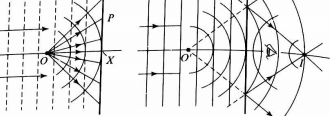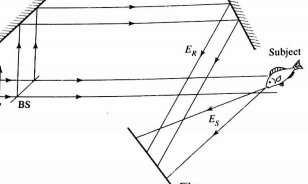Introduction
Holography is a procedure used in forming holograms. Holograms are recordings of images formed when two light beams meet. The recording occurs in a photosensitive emulsion of photographic material (Collier 100). In this technique, a laser produces one beam while the other is produced from the same laser but first strikes an object, which alters it before hitting the photographic film. Today holography has been widely used in artwork and advertisement.
Differences between photography and holography
Holography differs from normal photography in that it gives details of an object in a three-dimension perspective while photography provides details of an object only in a two-dimensional perspective. The recorded image in holography gives details of both depth and parallax. The recordings made in holography include details such as the phase of the wavefront and amplitude (Pedrotti F. and Pedrotti L. 400). However, in photography, only the radiant energy is recorded and therefore details of phase distance and amplitude are lost. Photography makes use of a lens to focus the object into a film. By contrast, a hologram is not an image of the object but a recording of the complete signal wave.
Construction of holograms
Holograms can be made either from a point source or from an extended object. In a point source, plane wavefronts of coherent, monochromatic strike a photographic plate. Moreover, spherical wavefronts are viewed at the plate after being dispersed from the object. At the end of the process, the formed plate reveals a series of concentric interference rings about the center (Pedrotti F. and Pedrotti L. 401). The formed plate is known as a Gabor zone plate. The transmittance in the Gabor Zone plate is expressed as ![]() , where A, B, and a are constants and r is the radius.
, where A, B, and a are constants and r is the radius.

When forming a hologram from an extended object a lens and pinhole are both utilized to enlarge the beam from the laser. A reflecting plate separates the enlarged beam to form two coherent beams (Collier 120). Two plane mirrors direct the reference beam onto a photographic plate while the other beam reflects from the object at the plane of the plate. Some of the beams also hits the plate where it interferes with the reference beam to form a hologram. The reference beam is represented by the electric field as


One of the distinct properties of a hologram is that the hologram gets light from each part of the object in the setting. This implies that any part of the hologram has similar details as those from the object (Pedrotti F. and Pedrotti L. 402). The hologram has several exposures, each formed at different angles relative to the reference beam and with specific light wavelengths.
Applications of holography
Nondestructive testing is a method used to establish maximum stress points on an object when pressure is enforced (Pedrotti F. and Pedrotti L. 406). The sensitivity of this method has been illustrated in various holographic recordings such as compressional waves associated with a speeding bullet.
Holographic interferometry is applied to examine vibrating surfaces, where the object under investigation is in a continuous motion during exposure of the hologram. The pattern of interference fringes gives details on the relative vibrational amplitude. The measurements of vibrational amplitude help know the modes of vibration of complex systems. Holography is also useful in data storage (Collier 125). Holograms can be used to store huge amounts of information.
Works Cited
Collier, Robert. Optical Holography. New York: Academic Press, Inc., 2013.
Pedrotti, Frank, and Leno Pedrotti. Introduction to optics. England: Pearson Education Limited, 2014. Print.